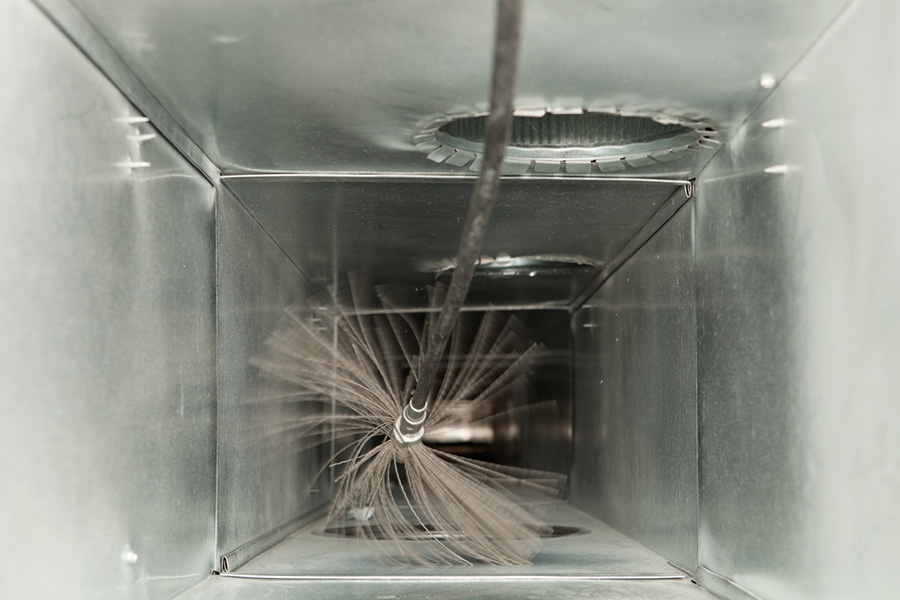Serving Nashville and the Middle Tennessee Area

How To Tell If Your Furnace Ducts Are In Shape
Your furnace might be in great shape, but if your ductwork isn’t pulling its weight, your comfort—and your energy bills—could be suffering. Ducts are the unsung heroes of your heating system, quietly delivering warm air throughout your home. But over time, they can crack, clog, or shift out of alignment, weakening performance and wasting energy. The Maynard Man knows that failing ducts don’t always make noise—but they do leave clues. In this blog, we’ll show you how to spot the signs that your ductwork needs attention, and how to make sure your entire heating system is working as efficiently as possible. Catching issues early means fewer drafts, fewer surprises on your utility bill, and more consistent comfort all season long.
Why Your Ductwork Matters
Your furnace creates the heat, but it’s your ductwork that carries it to every corner of your home. If those ducts are in poor condition—cracked, unsealed, or clogged—they can quietly undo everything your furnace is working to accomplish. The result? A HVAC system that runs longer than necessary, struggles to maintain temperature, and consumes more energy than it should. Even small leaks or blockages can create big imbalances in airflow, leaving some rooms too cold while others overheat. And since ducts are usually hidden in walls, attics, and crawlspaces, problems often go unnoticed for years. That’s why it’s essential to check that your ductwork is up to the task—especially before peak heating season.
Signs Your Ducts Might Be Struggling
You don’t have to see inside your ducts to know something’s wrong. Your home will usually give you subtle but clear clues when your ductwork isn’t functioning properly. The Maynard Man recommends watching for these signs of trouble before they lead to bigger comfort or energy issues.
Uneven Temperatures Between Rooms
If one room is always toasty while another feels noticeably cooler, your ductwork could be the culprit. This often happens when there are leaks, gaps, or disconnected sections preventing warm air from reaching certain areas of your home. Poor insulation around the ducts can also allow heat to escape before it ever reaches your vents.
Whistling or Rattling Sounds
Unusual noises coming from your vents when the furnace kicks on usually point to airflow problems. Whistling often means air is squeezing through cracks or pinched sections, while rattling could indicate that part of the duct is loose or shifting. These sounds may seem minor, but they’re early warnings that your system is struggling to move air efficiently.
High Energy Bills Without Explanation
If your energy costs are going up but your usage habits haven’t changed, your duct system may be to blame. Leaks or blockages in your ducts can force your furnace to work harder and longer just to maintain the same temperature. That wasted heat equals wasted money—especially during colder months when efficiency matters most.
How to Take a Closer Look
Even though most ductwork is tucked away out of sight, there are still a few ways you can check in on its condition without needing special tools. The Maynard Man suggests these simple steps to help you spot issues early:
Check for Visible Gaps, Tears, or Loose Connections
Start by looking at any exposed ductwork in your attic, crawlspace, or basement. Look for sagging sections, disconnected joints, or worn insulation. Even small openings at connection points can lead to big heat losses.
Feel for Air Leaks While the Furnace Is Running
With the system on, place your hand near duct seams and bends. If you feel air escaping where there shouldn’t be any, there’s likely a leak that needs sealing. You might also hear a faint whooshing or fluttering if air is pushing through a gap.
Monitor Dust Levels and Filter Condition
Are you replacing furnace filters more often than usual? Seeing a constant layer of dust on your furniture? That could mean return ducts are pulling in unfiltered air from unconditioned spaces—another sign your ducts may be damaged or poorly sealed.
When It’s Time to Call the Pros
Some duct issues are easy to spot, but others require a trained eye and the right tools. If you’ve checked the basics and still notice comfort problems, unusual sounds, or persistent energy spikes, it’s time to let the experts take a closer look. The Maynard Man and his team use specialized equipment—like pressure testing and thermal imaging—to detect leaks, obstructions, and design flaws that aren’t visible from the outside. They can also assess whether your duct layout is efficient for your home’s size and furnace capacity. Crushed sections, sharp bends, or undersized ducts can restrict airflow even if there are no obvious leaks. A professional inspection doesn’t just identify problems—it gives you a clear plan to fix them and optimize your system’s performance for the long haul.
Wrap-Up: Get Ducts That Work as Hard as Your Furnace
Your furnace works hard to heat your home—but if your ductwork isn’t in shape, that effort goes to waste. From air leaks to loose connections and insulation gaps, even small duct issues can make a big impact on comfort and efficiency. Knowing the signs and taking action early helps you avoid rising bills, cold spots, and long furnace cycles. The Maynard Man is here to make sure every part of your heating system is working together, from the furnace itself to the farthest vent. Contact Maynard Plumbing, Heating, Cooling to schedule a professional duct inspection and keep your heat flowing exactly where it belongs.
Recent News
How to Protect Your Pipes from Freezing During Cold Weather in Nashville
5 Signs Your Water Heater Needs Repair Before Winter Arrives in Nashville
How Regular Drain Cleaning Can Prevent Costly Plumbing Emergencies
High-ROI Home Improvements in Nashville
Energy Efficiency & Indoor Air Quality Blueprint for Tennessee Homes
Home Heating and Cooling Options: Ductless, Mini Split, and Heat Pump Explained
The Ultimate Nashville Home Maintenance Calendar
Schedule Service


